Ural-batyr
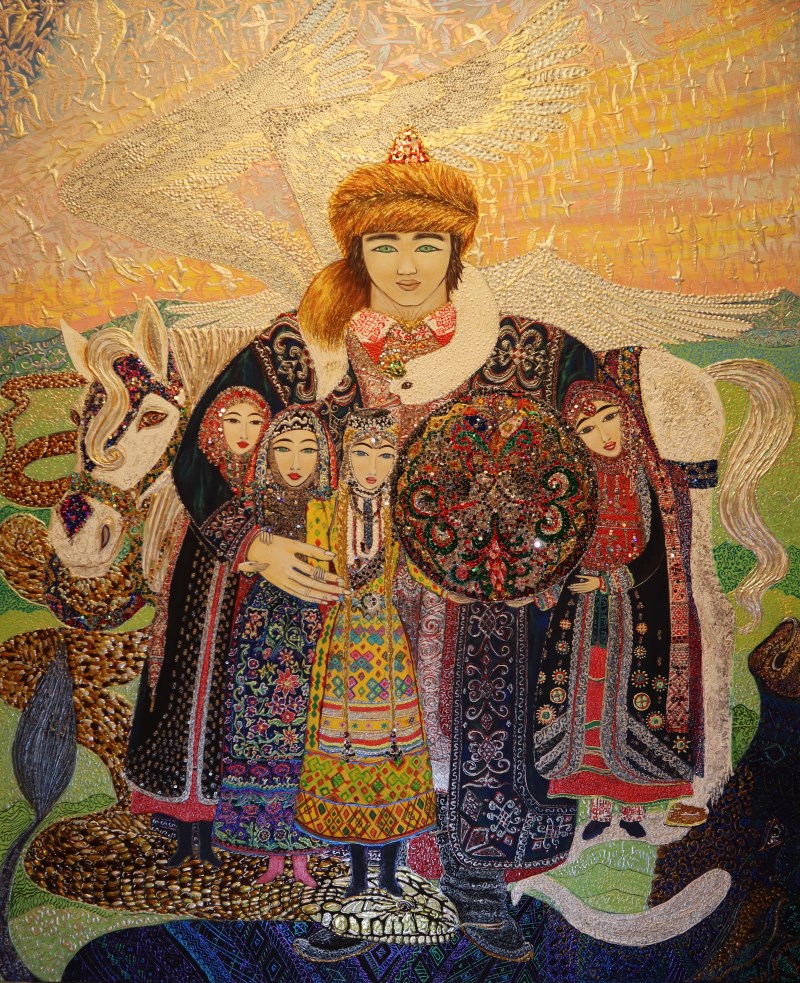
Ural-batyr. 100x80 cm. Tempera, acrylic and minerals on canvas. 2023
This painting was created based on the Bashkir epic of the same name. It is the cornerstone of Bashkir mythology, most of other myths and tales tell either about its heroes or about events related to it.
As often happens, it is very difficult to determine the time of the events of the epic. It was passed down from generation to generation by sesen (storytellers) in the form of a kubair (poem), and was written down only in the 20th century. There are a variety of theories, from the Middle Ages to the bronze age. Some researchers see analogies with Sumerian mythology, and in the text they find a description of the Great Flood. Indeed, the epic contains a plot about the complete flooding of the lands, when people escaped by boat, and the subsequent withdrawal of the sea. It is interesting that this event in the epic is preceded by a strong blow and a fiery explosion. So the daevas started the war. Or did a meteorite fall?
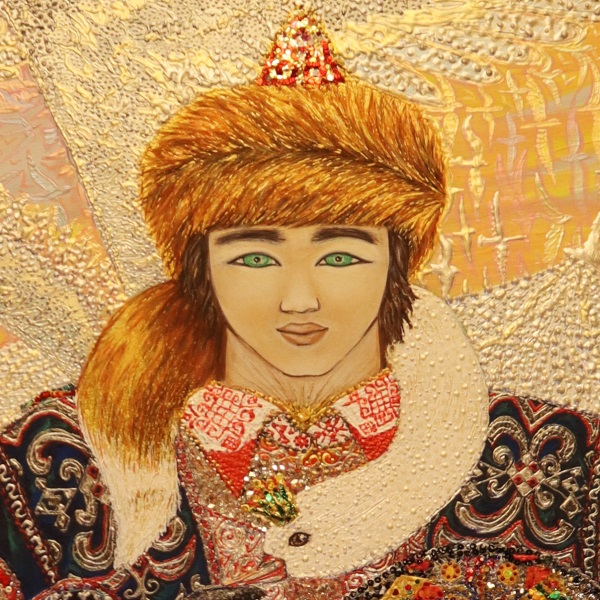
The male image is the Ural - a hero and at the same time the Ural - Bashkortostan. Ural Batyr is a very kind hero. Since childhood, he dreamed that no one would kill anyone, even animals and birds, each other. He gathered them and persuaded them to live in peace, but the predators did not agree. Then Ural set off on a journey with the goal of finding and defeating Death itself. Many adventures, good and evil people and creatures awaited him along this path. Often he had to fight. If a person attacked him, he always tried to resolve the matter peacefully, to bring him to the side of good. With daevas and snakes he dealt mercilessly. Thus he freed the people of several kingdoms. But he himself never pursued wealth and honors.
Ural is dressed in traditional Bashkir clothes. The swan princess Humai hugs his neck. With her beak she points to herself in human form. The sky behind the batyr is all covered with birds; these are the subjects of the heavenly king, father of Khumay.
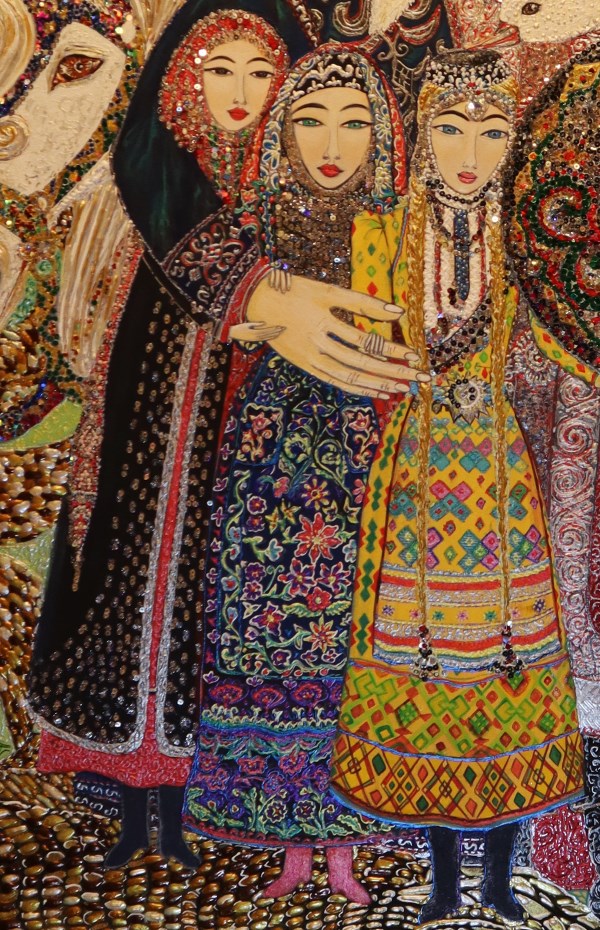
The female images symbolize both the wives of the batyr and the four main ethnographic groups of Bashkirs (there are seven such groups in total), which is expressed in their outfits.
Ural had three wives. Khumay is the daughter of the heavenly king of birds Samrau; Gulistan, whom the batyr freed in the palace of the serpent Kahkakha, and the daughter of the evil king Katila, whose name is not mentioned in the epic. Khumay's younger sister, Aikhylu, was the wife of his brother Shulgen, but Ural accepted her son as his own.
Of these, only Humay is personified in the picture. She is depicted in the clothes of the northwestern Bashkirs. The prototype of the yellow dress was taken from the collection of the National Museum of Bashkortostan. She is wearing a sling - buensa. There is a kalfak on the head. And breastplate iseu .
The woman in the middle is dressed in the attire of the northeastern Bashkirs. She is wearing a traditional dress and apron in multicolor chain embroidery with large floral patterns. A breastplate made of coins - muiynsa. On the head there is a kalfak embroidered with beads, a kushyaulyk scarf and a chin collar.
The one on the far left is in the attire of the southwestern Bashkirs. Yelyan is embroidered with coins. On her head is a kashmau embroidered with coral and coins, and behind its' tail embroidered with beads, coins and cowries. The breastplate hakal.
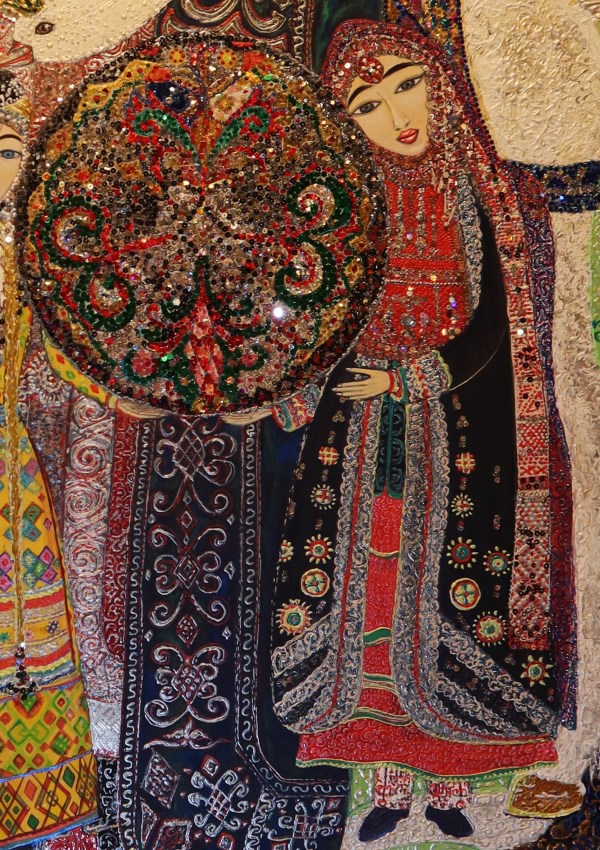
This woman is dressed in southeastern attire. Yelyan is embroidered with braid, coins and solar symbols. On the head there is a kashmau and kushyaulik, a seltair breastplate with a characteristic beaded mesh.
The shield of the hero is a shield of beauty, symbolizing that culture is the main wealth and the best protection of the people.
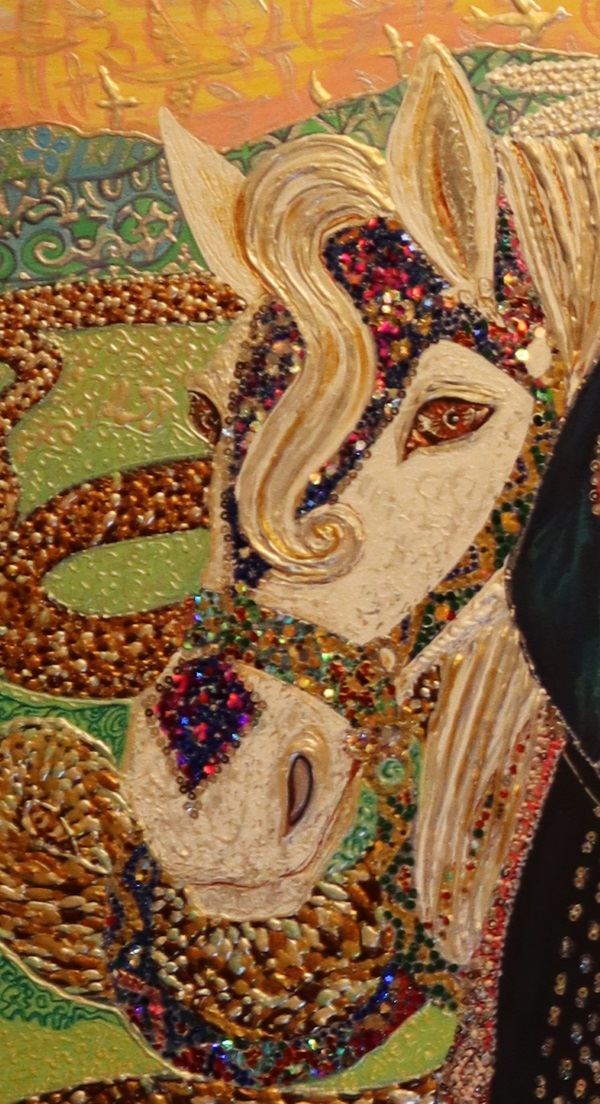
Akbuzat is the winged horse of Ural Batyr and his faithful friend. He was given to Humai by her mother, Koyash the Sun. Before meeting the hero, he lived in heaven and did not recognize any of the horsemen. The Ural won his recognition in fair competition with his brother, and after that Akbuzat more than once rescued the hero in battle.
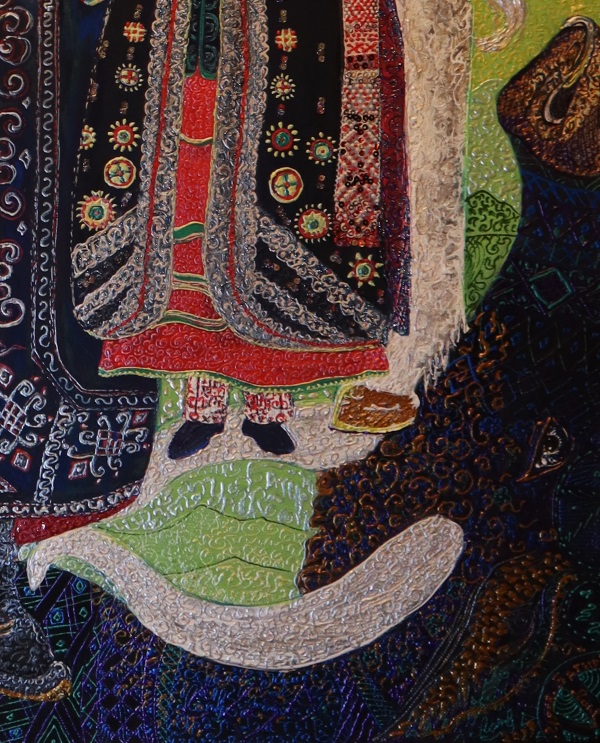
The black bull that supported the palace of King Katila. Huge as a mountain, terrible in anger, all the warriors were afraid of him. Ural Batyr defeated the bull and ordered him and his entire breed to serve people from then on. After that battle, the horns of the bulls went from straight to curved, the hooves became cloven, and fangs disappeared from their mouths. In the painting, the black bull also symbolizes the earth.
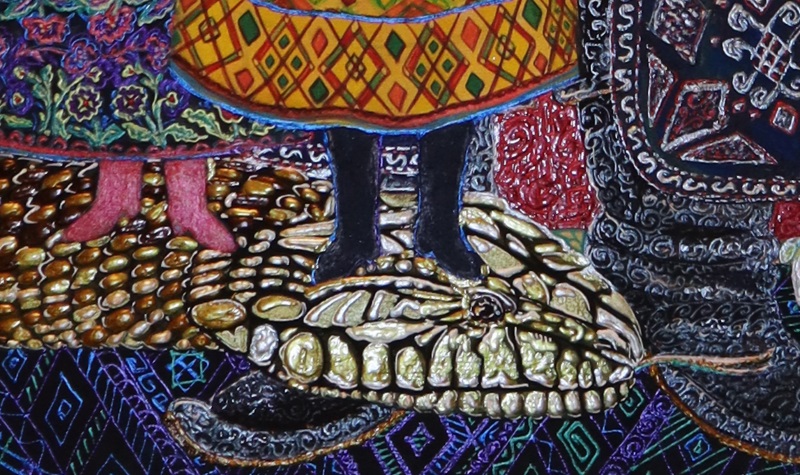
Kakhkakha, the king of snakes. In the epic, good is represented mainly by people and birds, and evil is represented by daevas and snakes. The Ural destroyed the snake kingdom and freed the people imprisoned there. But Kakhkakha managed to escape that time, and only much later batyr along with his sons defeated him, and made mountains from his body. This plot echoes the mythology of other peoples that the Ural Mountains originated from the petrified Golden Snake.
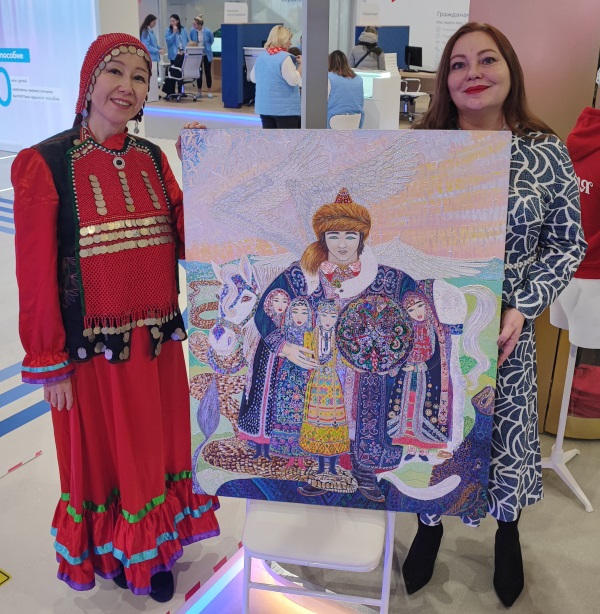
The presentation of the painting took place on December 3, 2023 during the Day of the Republic of Bashkortostan at VDNKh, Moscow
In the photo - with the director of the Moscow Bashkir theater "Ilgam" and the collective "Ethnoproject Moscow" Madina Ilgamova

